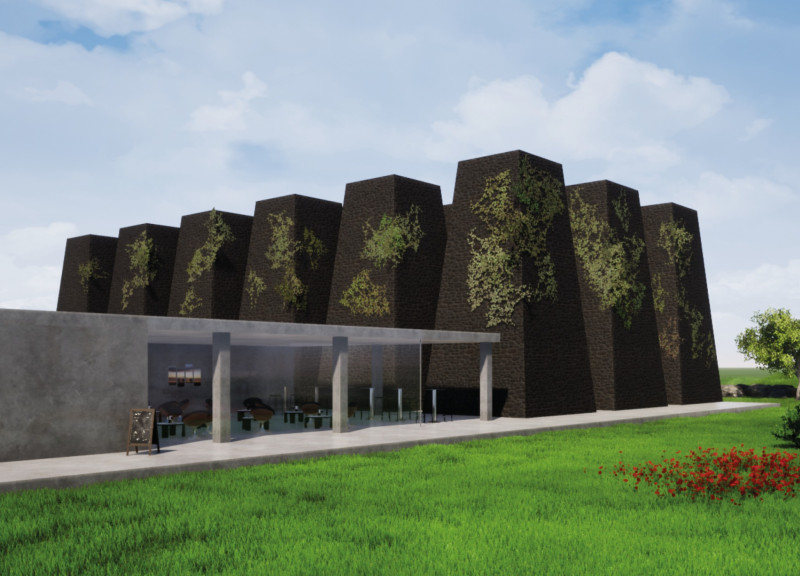5 key facts about this project
The Hedgehog is located in the picturesque region of Myvatn Lake, Iceland. The design creates a connection between the building and the surrounding landscape. It serves multiple functions, including office space, a public café bar, and the Iceland Volcano Museum. The design concept emphasizes a contrast between the above-ground pavilion and an underground museum, allowing both forms to coexist harmoniously with nature.
Above Ground
The above-ground section features a low pavilion made largely of glass. This extensive use of floor-to-ceiling windows allows natural light to enter, providing views of the landscape outside. The pavilion occupies half of the building’s area and accommodates around 26 employees alongside a café bar for 52 guests. The transparent design ensures the structure blends into its environment rather than dominating it.
Tower Structures
In contrast to the glass pavilion, the other half of the building consists of 18 tall, spine-like structures that extend about ten meters into the air. These spines are shaped like truncated pyramids and serve as both lighting sources and support for the underground museum. Their design is significant, reflecting the area’s volcanic origins and adding visual interest to the overall composition.
Subterranean Functionality
Most of the building’s functions are placed underground, which helps maintain the integrity of the landscape above. The first basement features the Iceland Volcano Museum, while another level provides parking for employees. This arrangement minimizes the visual impact on the environment. As a result, only the pavilion and the distinct spines are visible, creating a low profile that respects the natural scenery.
Materiality
The building’s façade uses volcanic rock, taking inspiration from traditional stone masonry. This choice links the structure to its geographical context while enhancing its visual identity. The spines, covered in volcanic rock, echo the geological features of the surrounding area, reinforcing their relationship with the landscape.
As night falls, the integrated lighting within the spines casts a gentle glow, illuminating the space and drawing attention to their unique shapes. This design detail enhances the building's presence in the landscape, connecting it further to the volcanic essence of the region.






















































